Fall sports season is in full swing here in north Missouri – from Friday night football games to weekend soccer tournaments. Along with the excitement comes an uptick in shoulder and knee injuries among student-athletes. Common issues like rotator cuff strains, dislocated shoulders, runner’s knee, and minor knee sprains can quickly sideline players. In fact, sprains and strains are the most frequent sports injuries, accounting for about 37% of high school sports injuries[1]. Knee injuries alone make up roughly 14% of all reported high school sports injuries[1]. Shoulder injuries are also prevalent, especially in contact and overhead sports – one study found a median ~10.9% of youth athletes suffer a shoulder injury each season (some sports as high as 28%)[2]. The good news is chiropractic care can help these athletes recover faster and get back in the game safely. Let’s explore how a sports injury chiropractor can treat common shoulder and knee strains for fall athletes, using gentle adjustments, soft tissue therapies (like stretching, taping, and cupping), and preventive tips to keep our local players healthy.
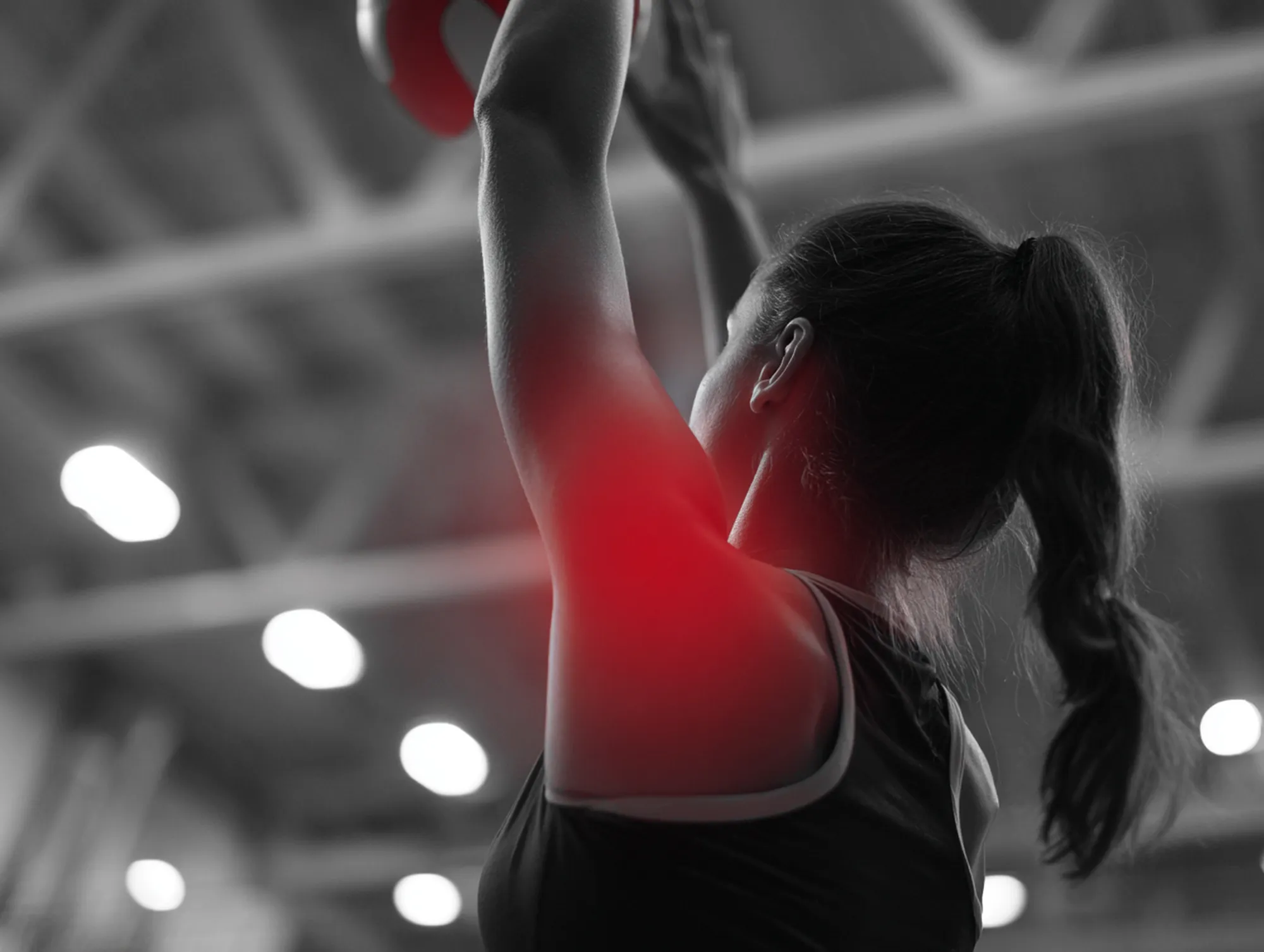
Common Shoulder Injuries in Fall Sports
Shoulder injuries often occur in fall sports that involve heavy contact or repetitive overhead motions. For example, football players endure repeated hits that can bruise or dislocate the shoulder, and quarterbacks/receivers put strain on the shoulder with every throw or reach. Volleyball players make frequent overhead serves and spikes, putting them at risk for rotator cuff tendinitis or impingement. Even cross-country runners or soccer players can injure a shoulder in an unexpected fall or collision.
Most sports-related shoulder injuries involve soft tissue damage rather than broken bones – the labrum (shoulder cartilage), ligaments, or tendons are commonly affected[3]. Major shoulder injuries seen in athletes include dislocations (when the upper arm bone pops out of the socket), rotator cuff tears, and labral tears (SLAP lesions). Minor injuries like shoulder strains, sprains, and inflammation are also frequent[3]. These conditions cause pain, limit range of motion, and hinder an athlete’s performance. For instance, a rotator cuff strain might make it painful to lift the arm or throw, while an AC joint sprain (common in football tackles) can cause swelling and shoulder instability.
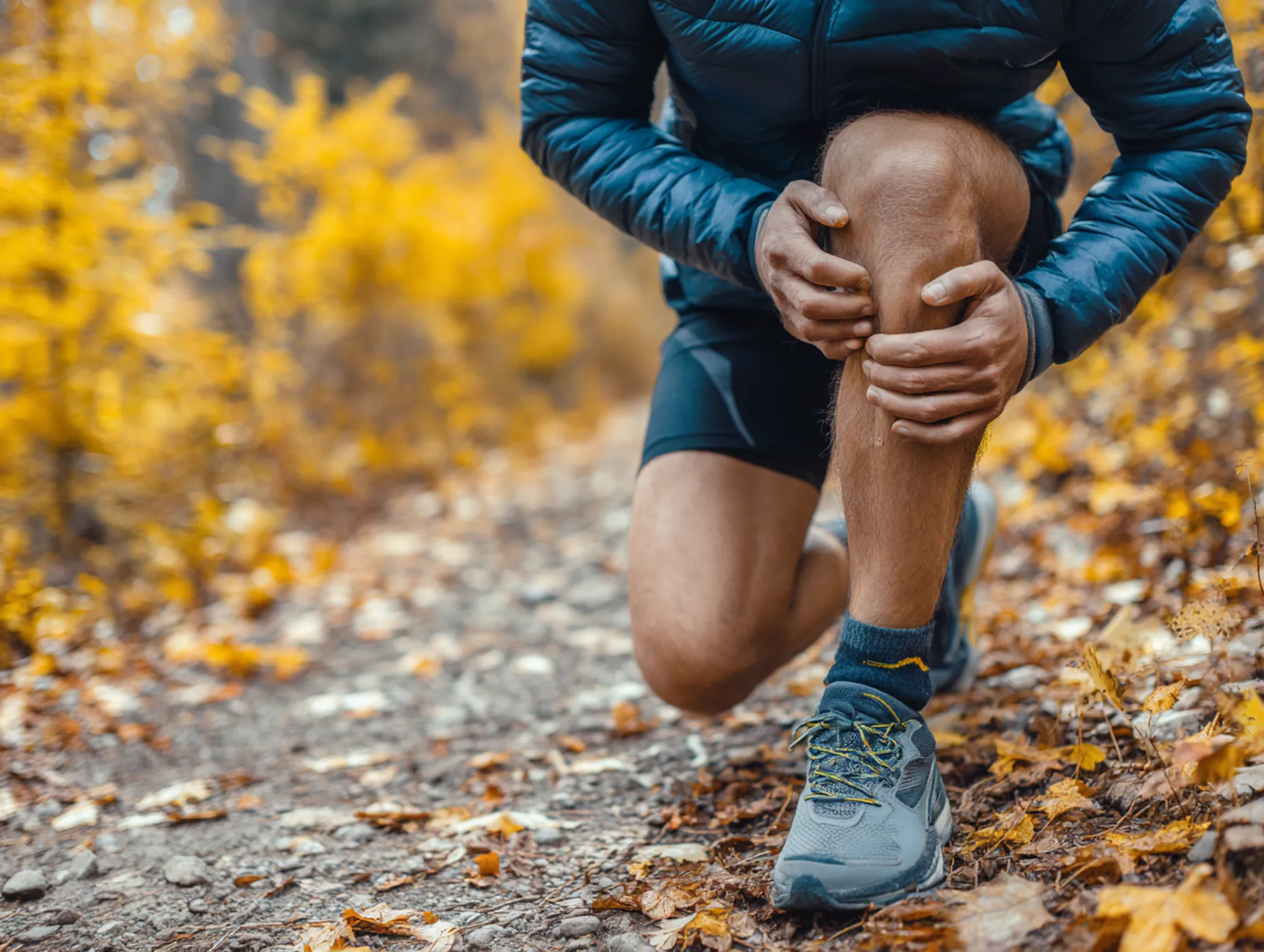
Common Knee Injuries in Fall Sports
Knee injuries are extremely common in sports like football, soccer, and cross-country – essentially any sport involving running, jumping, or quick direction changes. The sudden stops and turns of soccer and football put a lot of stress on knee ligaments, while long-distance runners face repetitive impact on the knee joint. A top concern is “runner’s knee”, a broad term for pain around the kneecap (often due to patellofemoral pain syndrome or tendon irritation). Athletes might feel a dull ache in the front of the knee that worsens with activity or stairs. Other common knee issues include minor sprains (overstretching ligaments), meniscus tears (cartilage injury from a twist), and ACL or MCL strains/tears in more severe cases.
Even when not season-ending, these injuries can significantly hamper an athlete’s season. A tender knee may cause a soccer player to sit out a few games or a runner to cut back on mileage. Proper treatment is key to avoid small issues becoming chronic problems. Sprains and strains are injuries chiropractors frequently encounter – a sprain means a stretched or torn ligament, while a strain affects muscles or tendons[4]. The good news is that with the right care, many knee injuries heal well without surgery, and chiropractic care can play a big role in that recovery.
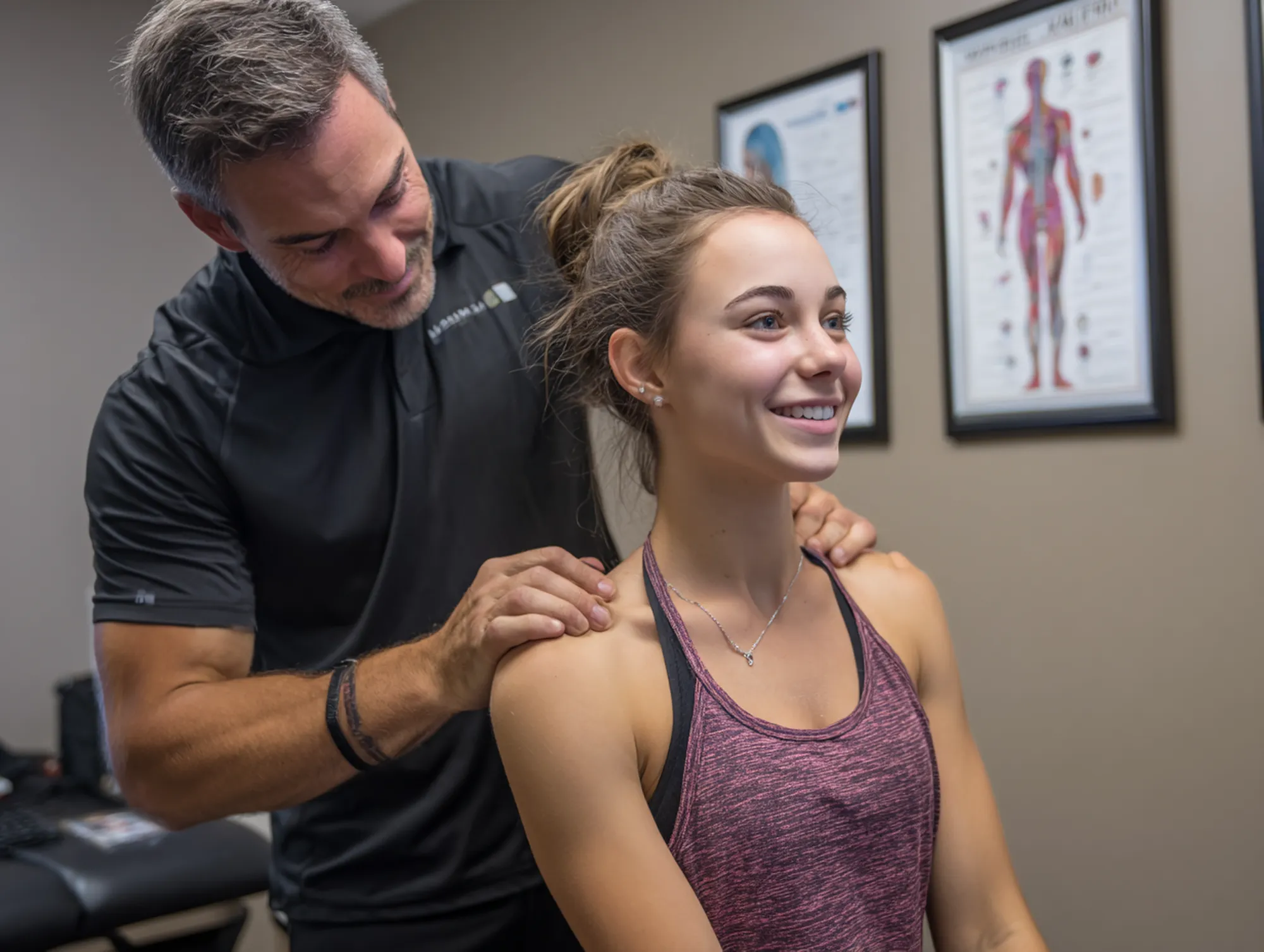
How Chiropractic Helps Shoulder Strains
When you think of a chiropractor, you might picture spinal adjustments – but chiropractic care extends to shoulder injuries too. Sports injury chiropractors are trained to evaluate the entire musculoskeletal system, including the complex shoulder joint. If a shoulder is misaligned (for example, a slight subluxation at the glenohumeral joint or tightness causing the shoulder blade to sit improperly), it can be adjusted to restore proper alignment and movement. Correcting these misalignments can relieve pressure on pinched nerves and strained muscles, reducing pain and improving range of motion[5]. In fact, athletes often report that after a series of shoulder adjustments, they regain flexibility and shoulder function that was limited by the injury[6].
Beyond adjustments, chiropractors use other therapies for shoulder strains. Soft tissue therapy is one – this might include targeted massage, myofascial release, or trigger point therapy on the surrounding muscles (like the deltoids, trapezius, or rotator cuff muscles). These techniques help reduce muscle tension and improve blood flow to the injured area, speeding up healing[7]. Your chiropractor may also guide you through rehabilitative exercises to strengthen the shoulder. For example, gentle resistance band exercises can fortify the rotator cuff and scapular stabilizers. Strengthening these muscles helps support the injured shoulder and can prevent future injuries[8].
Another aspect of chiropractic care is postural and technique advice. The chiropractor will check if poor posture or flawed mechanics contributed to the shoulder strain. They might notice, for instance, that a baseball pitcher is overusing the upper trapezius and not engaging the shoulder blade properly during throws, putting extra strain on the shoulder joint. By coaching better form – how to use proper technique or warm-up routines – a chiropractor helps athletes avoid re-injury. All of this adds up to a holistic approach: chiropractic care addresses the immediate pain and the underlying causes, so the athlete can recover fully and get back to peak performance.
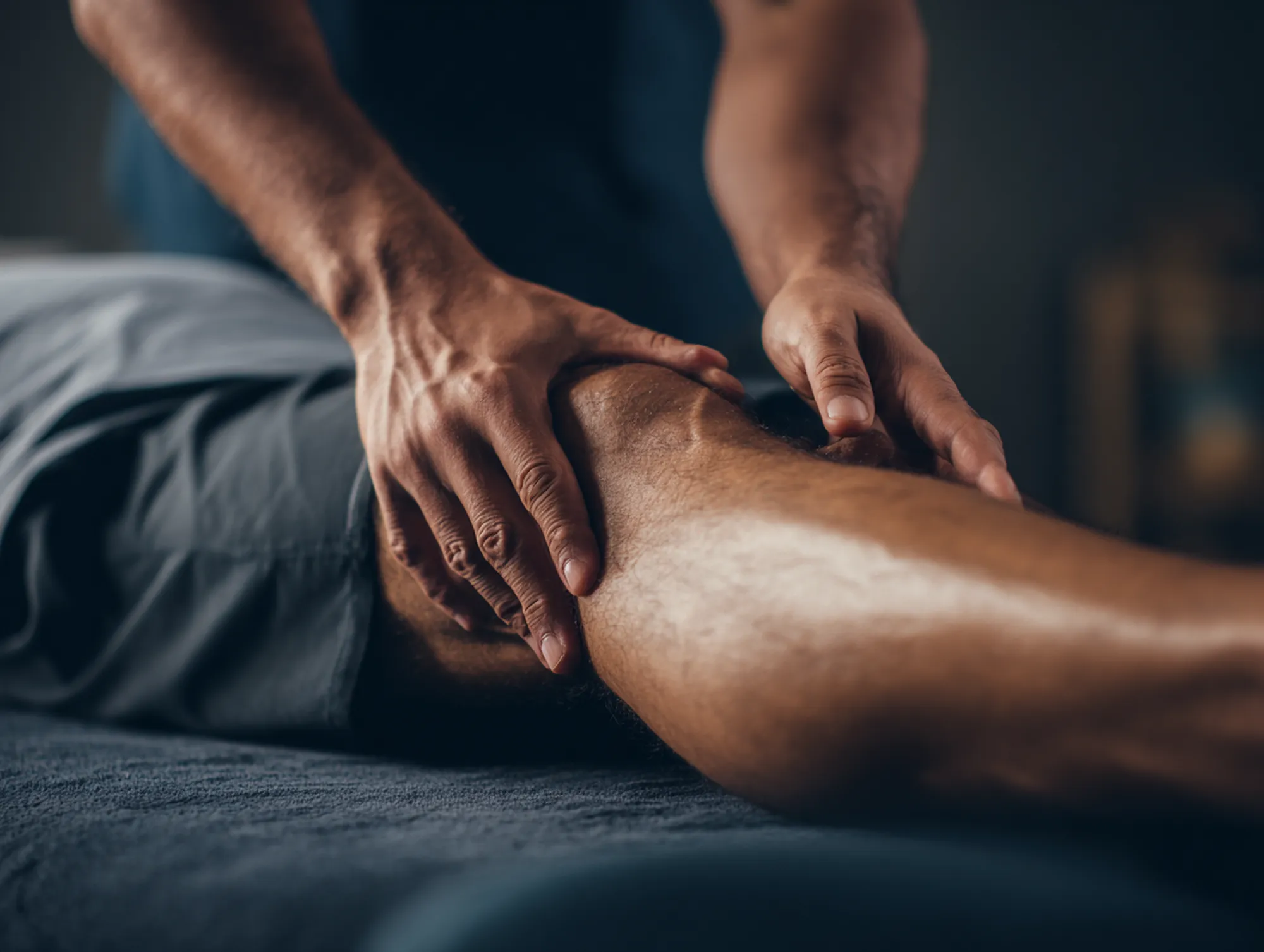
How Chiropractic Helps Knee Strains
Chiropractic care is just as valuable for knee injuries. A chiropractor will first assess the knee’s alignment and the surrounding joints (hips, ankles, and lower back) to get a full picture. Often, knee pain is exacerbated by imbalances elsewhere – for example, a slight pelvic misalignment or fallen arch in the foot can throw off the knee’s tracking. Spinal and extremity adjustments can realign these areas. If the tibia (shin bone) or femur isn’t moving correctly in the knee joint, a gentle knee adjustment can be done to reposition the joint surfaces properly. Realigning a misaligned knee joint helps restore normal movement and takes strain off the injured tissues[9]. It’s not unusual for patients to feel almost immediate relief after a knee adjustment, as pressure on irritated cartilage or pinched meniscal tissue is released.
Chiropractors also use manual therapies for knees. Inflammation around the knee can be addressed with soft tissue techniques – for instance, using massage or instrument-assisted soft tissue mobilization around the patella (kneecap) and thigh muscles to reduce tension. This improves circulation to the sprained ligaments or strained tendons, promoting healing. Strengthening exercises are crucial as well. Your chiropractor will likely prescribe specific exercises to target weak links – commonly the quadriceps, hamstrings, and hip abductors for knee rehab. Strengthening these muscle groups provides better support and stability for the knee. In fact, chiropractors focus on stabilizing and strengthening the knee with targeted treatments (manual adjustments, soft tissue work, and rehab exercises) to improve knee stability and reduce pain[10].
Throughout treatment, pain relief is a priority but so is restoring function. A sports chiropractor will work on improving your range of motion – for example, ensuring you can fully bend and straighten the knee without pain. They may use gentle stretching or even small tools (like a foam roller or therapeutic bands) during sessions to achieve this. The result is not just pain reduction but a knee that moves properly. By addressing misalignments and muscle imbalances, chiropractic care often helps athletes return to play faster and with more confidence in the injured knee. It’s a drug-free, non-invasive path to recovery that can complement and enhance traditional sports medicine.
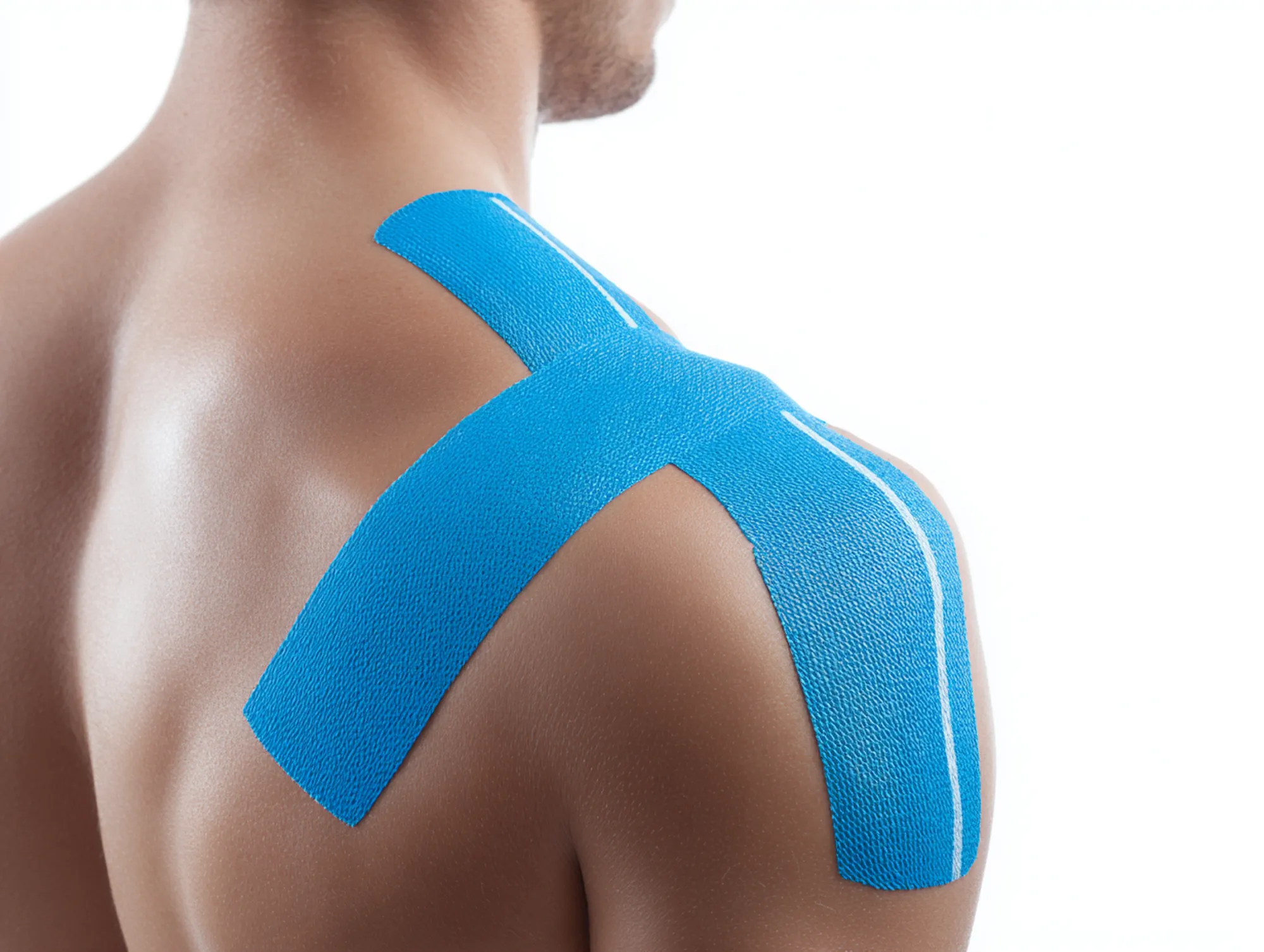
Taping and Cupping: Supporting Recovery
Aside from adjustments and exercises, chiropractors sometimes incorporate kinesiology taping and cupping therapy to aid an athlete’s recovery. You’ve probably seen athletes with those colorful strips of tape on their shoulders or knees. Kinesiology tape is a flexible, stretchy tape used to support muscles and joints without restricting movement. It’s often applied after an injury to relieve pain, reduce swelling, and provide gentle support to the area[11]. Unlike stiff athletic tape used to immobilize joints, kinesio tape’s elasticity allows you to move normally while it lifts the skin slightly. This lifting effect is believed to improve blood flow and lymphatic drainage in the area, which can help reduce inflammation[12][13]. For example, after a minor knee strain, a chiropractor might tape the knee in a specific pattern to stabilize the kneecap’s tracking and remind the surrounding muscles to engage properly. Many athletes report that kinesiology taping lessens their pain during activity and gives the joint a feeling of extra support. While research is mixed on taping’s effectiveness for everyone, when applied correctly for the right condition it can be a useful adjunct to chiropractic treatments.
Cupping therapy is another tool gaining popularity in sports rehab – remember the circular red marks on Olympian Michael Phelps a few years ago? Dry cupping involves placing suction cups on the skin, which draw blood to the area and create a negative pressure. This is thought to promote healing in muscles and fascia. For sports injuries, cupping can help with really tight muscle areas or knots that need increased blood flow. For instance, for a tight shoulder, cups might be placed on the rotator cuff or upper back muscles for a few minutes to “lift” and separate the tissue layers. Advocates claim it helps reduce muscle soreness and improve range of motion. Emerging evidence: A recent review found cupping might provide relief for musculoskeletal pain and sports-related injuries (like neck or back pain), though the overall evidence quality was limited[14]. In practice, many athletes simply find that it feels relieving – the suction is like an inverse massage, decompressing tight areas. One advantage is that it’s low-risk: aside from the temporary circular bruises and mild pinch during treatment, cupping is considered safe[15]. At The Well-House Chiropractic, we may incorporate cupping alongside your adjustments and exercises if we believe it will benefit your specific injury. It’s just one more natural therapy that can support your body’s healing process.
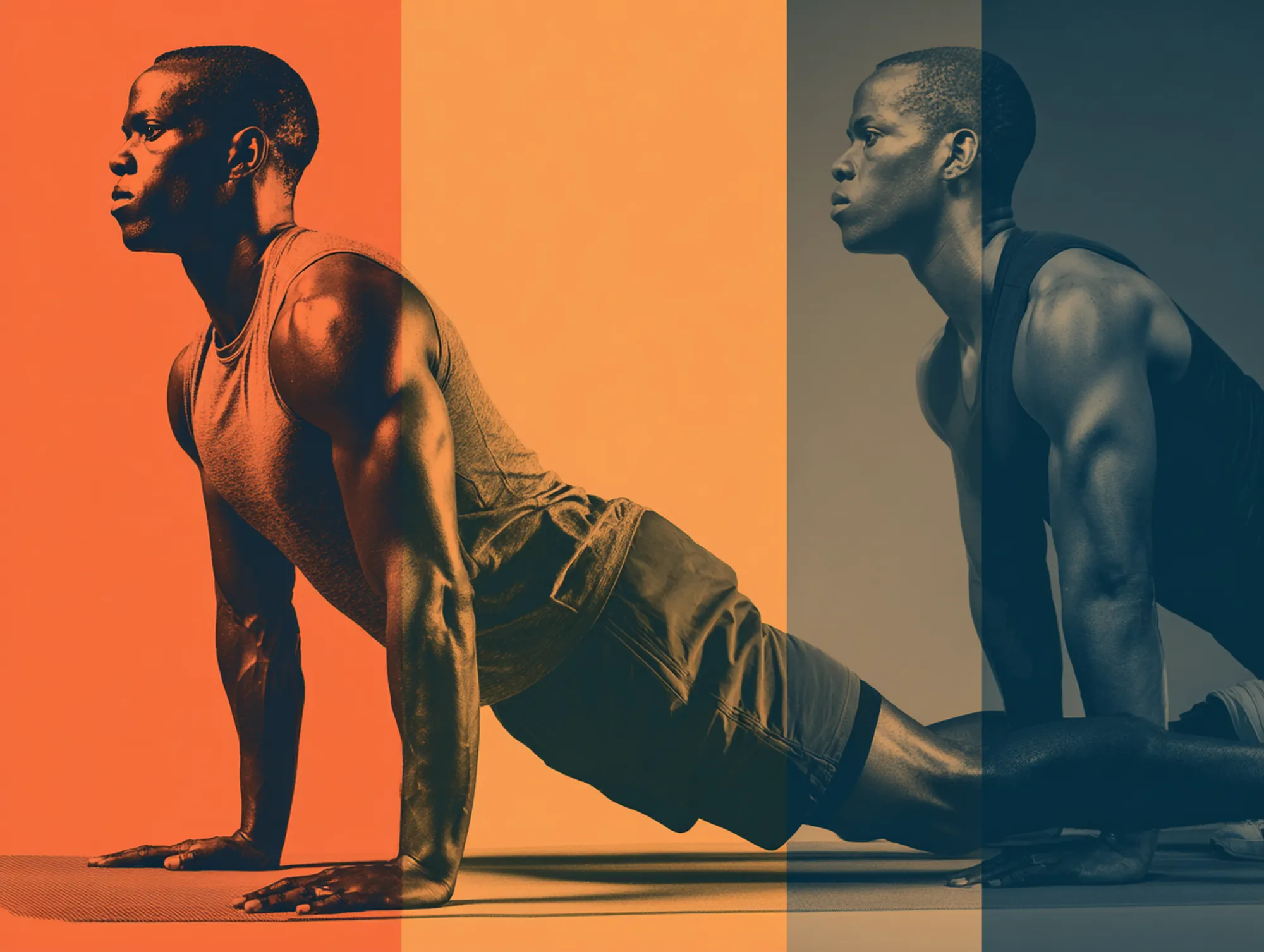
Prevention: Keeping Athletes’ Shoulders & Knees Safe
While treating injuries is important, preventing them in the first place is even better – especially as fall athletes push their limits each week. Here are a few tips we emphasize to keep shoulders and knees safer throughout the season:
- Always Warm Up and Stretch: Cold muscles and stiff joints are more injury-prone. Athletes should spend at least 10–15 minutes on dynamic warm-ups (light jogging, arm circles, leg swings) before practices and games. This gets blood flowing to the shoulders and knees. After activity, gentle stretching (like chest openers for the shoulders and hamstring/quad stretches for the legs) helps maintain flexibility.
- Build Strength & Balance: Targeted strength exercises can fortify the muscles that support key joints. For example, strengthening the rotator cuff and upper back muscles will better protect the shoulder during collisions or heavy use. Strengthening the quads, hamstrings, and glutes helps stabilize the knees during cuts and landings. Don’t forget balance and core exercises too – a strong core and good balance can prevent those awkward falls that lead to shoulder or knee strains.
- Use Proper Technique and Gear: Coaches play a big role in injury prevention. Young athletes should learn proper techniques – whether it’s how to tackle with the shoulder pads (not the shoulder joint), or how to jump and land with good form to avoid knee valgus collapse. Using appropriate, well-fitted gear is also key. For instance, wear supportive cleats on the field to prevent slip injuries, or a knee brace/tape if recommended for extra support.
- Prioritize Rest and Recovery: Soreness is normal in sports, but pain is a warning sign. Athletes (and parents) shouldn’t ignore persistent shoulder or knee pain. Rest days are crucial – they allow micro-tears in muscles and ligaments to repair. Overtraining without rest increases injury risk. Incorporating recovery modalities like icing after games, foam rolling tight muscles, or even periodic chiropractic “maintenance” check-ups can keep an athlete’s body in top shape all season.
3 Quick Exercises to Protect Shoulders & Knees: In addition to the above tips, here are three simple exercises any fall athlete can do a few times a week to build resilience (always check with a coach or provider if you’re rehabbing an injury first):
- Forearm Plank (Shoulder & Core Stability): Get into a plank resting on forearms and toes, keeping your body straight. Hold for 30 seconds. Planks strengthen the shoulder stabilizer muscles and core, which can protect shoulders during impacts and improve overall stability. Tip: keep shoulder blades engaged (slightly drawn down and together) during the plank.
- Hip Flexor Stretch (Knee Relief): Kneel on one knee (padded surface), other foot flat in front with knee at 90°. Gently lean forward, keeping your torso upright, until you feel a stretch at the front of the hip on the kneeling side. Hold ~20 seconds each side. Tight hip flexors can tug on the pelvic alignment and put extra pressure on knees; keeping them flexible helps ensure proper knee mechanics (great for runners and soccer players!).
- Glute Bridges (Knee & Hip Strength): Lie on your back with knees bent and feet flat on the floor. Squeeze your glutes and lift your hips until your body forms a line from shoulders to knees. Do 2–3 sets of 10. This strengthens the gluteal muscles and hamstrings, which support the knee and improve hip stability. Strong glutes can prevent issues like inward knee collapse when landing or cutting. Bonus: a strong backside also takes load off the lower back and knees during athletics.
By incorporating exercises like these into training, athletes can build more durable shoulders and knees. Chiropractic care can also play a preventive role – some studies have found that regular chiropractic adjustments and exercise guidance can help reduce the incidence of certain injuries (for example, evidence suggests chiropractic care may help prevent knee injuries in athletes, which is why many sports teams now include chiropractic in their wellness routines[16]). Our clinic often works with local athletes not just when they’re hurt, but for proactive check-ups to ensure their joints are moving well and to catch any dysfunction early.
In the rush of a season, it’s easy to neglect these preventive steps. But a little time spent on strengthening and recovery each week can pay off with a healthier, stronger athlete who misses fewer games.
Conclusion: Fall sports should be fun and fulfilling – injuries are a hurdle, but they don’t have to end the season. Chiropractic care provides a natural, effective way to heal common shoulder and knee strains so athletes can return to play confidently. As Chillicothe’s local sports injury resource, The Well-House Chiropractic is here to help our football, soccer, cross-country and other fall sports athletes stay in top shape. From gentle adjustments to rehabilitative exercises and tools like taping or cupping, we tailor treatments to each athlete’s needs. If you or your young athlete is struggling with a shoulder or knee strain this season, don’t tough it out alone – give us a call or book an appointment. We’ll get you moving well and back in the game, so you can enjoy the rest of your season at 100%!
Now Scheduling
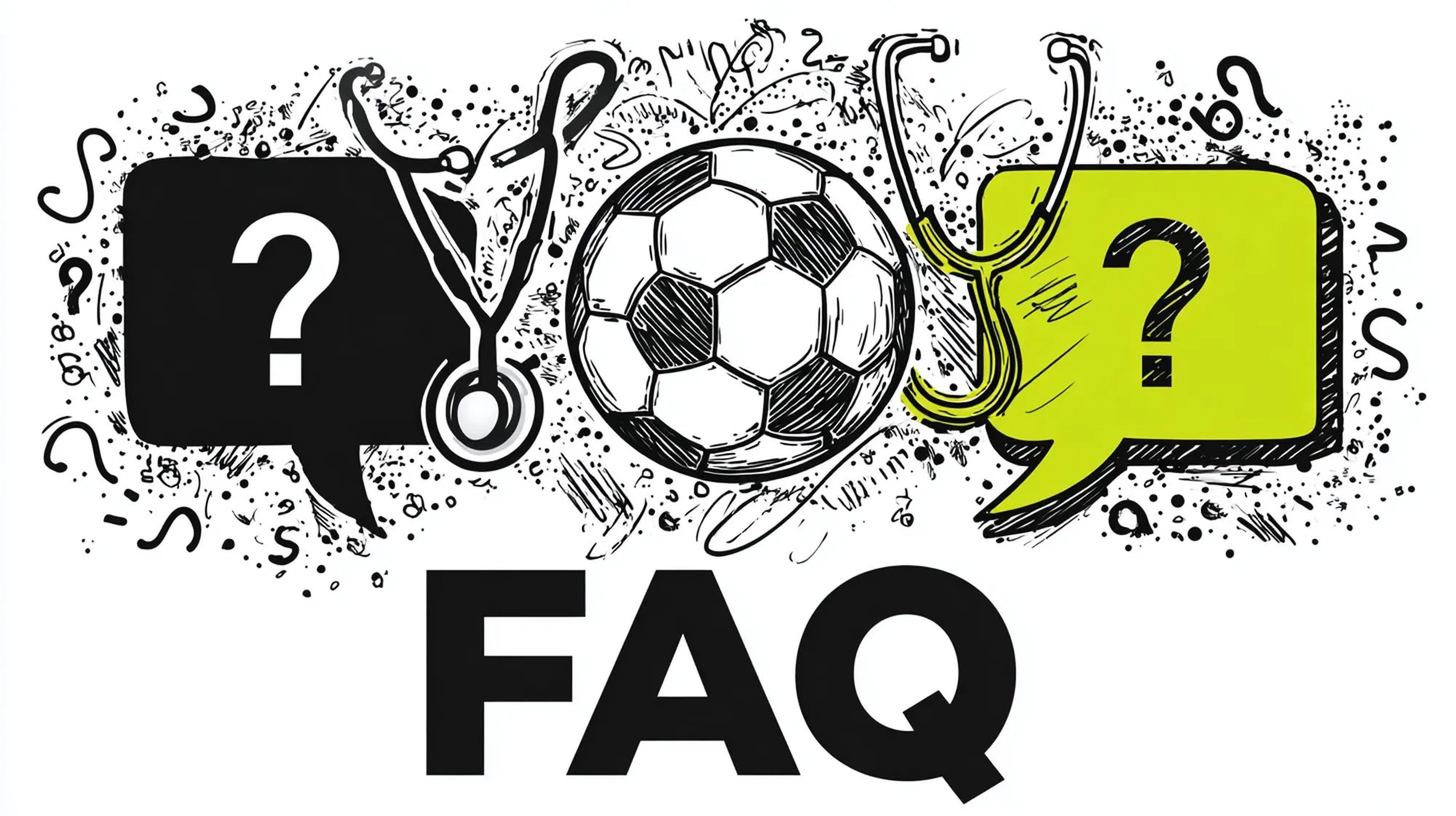
FAQs
Can a chiropractor help with a shoulder strain or rotator cuff injury?
Yes – chiropractors are trained to treat shoulder injuries. They will assess the shoulder’s alignment and the surrounding muscles. Treatment often includes gentle adjustments to the shoulder joint (to improve its alignment) and soft tissue therapies to relax tight muscles. By restoring proper alignment and reducing muscle tension, chiropractic care can relieve shoulder pain and improve range of motion[5]. The chiropractor may also prescribe rehab exercises to strengthen your rotator cuff and shoulder blade stabilizers, which helps the injury heal and prevents it from coming back. Many athletes with rotator cuff tendinitis or minor tears find they recover faster with this combined approach. (Of course, severe shoulder injuries like complete tendon tears might require orthopedic care – your chiropractor will refer you to a specialist if needed.)
Do chiropractors treat knee injuries like runner’s knee or sprained knees?
Absolutely. Sports chiropractors frequently treat knee pain and sprains. They can perform adjustments not only to the spine but also to the knee joint and surrounding joints. For example, if your tibia and femur aren’t gliding correctly due to a misalignment, a chiropractor can gently adjust the knee to restore proper positioning[9]. This often alleviates pain by reducing stress on the injured tissues. Chiropractors also use therapies like ultrasound, muscle release techniques, and guided exercises for knee injuries. They’ll work on strengthening the muscles around your knee (quads, hamstrings, calves) to support the healing ligament or tendon. Patients with runner’s knee (patellofemoral pain) often benefit from chiropractic care because it addresses underlying issues – like pelvic or foot misalignments – that contribute to the knee pain. The goal is not just pain relief, but better knee function. Many patients are pleasantly surprised that they can avoid more invasive measures and get back to running or sports with the help of chiropractic treatments.
Can a chiropractor adjust areas other than the spine, like shoulders or knees?
Yes – chiropractors can adjust extremity joints (not just the spine). This is sometimes called extremity adjusting. Chiropractors commonly treat shoulders, elbows, wrists, hips, knees, ankles, and even feet with adjustments when those joints are not moving properly. The process is similar to a spinal adjustment: the chiropractor uses a specific gentle force to nudge the joint back into its proper alignment. For instance, with a painful shoulder, they might adjust the head of the humerus in the shoulder socket if it’s slightly misaligned. Or for a knee, they can adjust the tibia (shin bone) with respect to the femur to improve tracking. Correcting these misalignments helps restore normal function and mobility to the joint[9][17]. It’s a safe, drug-free way to fix joint problems – often relieving pain and preventing the issue from worsening. If you’ve twisted an ankle or have chronic shoulder clicking, a chiropractor may be able to help by ensuring everything is lined up and moving as it should. Always let them know exactly what hurts – they will evaluate if an extremity adjustment is appropriate in your case.
What are those colorful tapes athletes wear – does taping really help?
Those bright strips are usually kinesiology tape (kinesio tape for short). It’s a stretchy, breathable tape applied to support injured or overused muscles and joints. Unlike traditional athletic tape (which is stiff and mainly for immobilization), kinesiology tape’s elasticity allows for continued movement. It’s often used to reduce pain and swelling in a targeted area[11]. The tape lifts the skin slightly, which can improve blood and lymphatic flow – potentially speeding up healing of bruised or swollen tissues[13]. Athletes also say it gives them a sense of stability – for example, taping a knee with patellar tracking issues or a shoulder with a minor strain can remind those muscles to engage and not overstretch. Does it really work? Anecdotally many athletes and clinicians find it helpful, and it’s widely used for post-injury support[18]. Scientific research has mixed results; some studies show improved function or pain reduction with taping, others find minimal difference (it often depends on the condition and taping technique). The bottom line: kinesio taping is low-risk and if applied correctly, many athletes feel it’s a beneficial extra layer of support. If nothing else, it doesn’t harm – and it might just give that bit of pain relief or muscle activation you need. Our chiropractor often applies tape at the end of a session for patients who could use the extra support between visits.
How does cupping therapy help with sports injuries?
Cupping therapy uses suction cups on the skin to stimulate blood flow and relieve muscle tension. You may have seen the circular bruise-like marks on athletes – that’s from cupping. For sports injuries and sore muscles, cupping can help loosen tight areas and possibly accelerate recovery. The suction pulls blood into the area and is thought to help flush out metabolic waste. Athletes commonly get cupping on their backs, shoulders, or legs after hard workouts to ease muscle knots. As for evidence: some research reviews have found that dry cupping might provide relief for musculoskeletal pain and sports-related issues (like back or neck pain), but they also note the evidence isn’t very strong yet[14]. It’s hard to study because there’s no easy “placebo” for cupping, but many athletes swear by it. From a safety standpoint, cupping is generally very safe when done by a trained professional[15]. The main side effect is those temporary marks and maybe some skin irritation. At our clinic, we use cupping as a complement – for example, if you have a stubborn tight hamstring or shoulder trigger point, a few minutes of cupping can help release it. While it’s not a magic cure, most people find it deeply relaxing and feel looser after. It’s one more tool in the toolbox to help an athlete bounce back quickly.
Sources:
- American Academy of Orthopaedic Surgeons (AAOS) – High School Sports Injuries – AAOS Now, June 2023. Provides epidemiological data on youth sports injuries; notes sprains/strains are ~36.8% of injuries and knee injuries ~14.1%[1]. (aaos.org)
- PubMed – Epidemiology of Youth Shoulder Injuries (2022) – Research finding the median seasonal prevalence of shoulder injuries in youth sports ~10.9% (ranging up to 28% in some sports)[2]. Helps illustrate how common shoulder issues are for young athletes.
- Active Health & Wellness Center – “The Role of Chiropractic Care in Treating Sports-Related Shoulder Injuries” (July 2024) – Outlines how chiropractic adjustments, soft tissue therapy, and exercises benefit shoulder injury recovery in athletes[5][6]. (activehealthcenter.com)
- O’Neill Chiropractic – “Chiropractic Therapy for Knees & Shoulders” (Blog, Nov 2018) – Explains extremity adjustments for knee and shoulder issues. Notably describes how a chiropractor can adjust a misaligned knee to restore function[9] and the unstable nature of the shoulder (and need to align it)[17]. (oneillchiro.com)
- Whitefish Chiropractic – “Most Common Sports Injuries Treated by Chiropractors” (Dec 2024) – Discusses common athletic injuries. Notes that sprains/strains are typical and that chiropractic uses adjustments + soft tissue work to speed healing[4]. Also highlights that runner’s knee and similar injuries are common and improved via chiropractic strengthening and adjustments[10].
- ChiroOne Wellness Centers – “Chiropractic Care for Runners: Relieve Knee Pain” (Jan 2023) – A blog focused on runner’s knee; cites research that chiropractic care can increase knee mobility/strength and even help prevent some knee injuries in athletes[16]. Underscores the preventive aspect of chiropractic in sports.
- Hospital for Special Surgery (HSS) – “Kinesiology Tape: What It Is and How to Use It” (Q&A) – Explains kinesiology tape’s purpose: to support muscles/joints, improve circulation, reduce pain and swelling[11]. Provides context on how tape is used post-injury and that most professionals use it to lessen pain and stimulate muscles[18]. (hss.edu)
- Harvard Health Blog – “What exactly is cupping?” (July 2024) – Reviews cupping therapy evidence. Concludes that cupping might help some musculoskeletal conditions (with low-to-moderate evidence)[14] and is generally safe aside from bruising[15]. (health.harvard.edu)
[1] Study Reveals Wealth of Data on Sports Injuries among U.S. High School Athletes
https://www.aaos.org/aaosnow/2023/jun/research/research03/
[2] The Epidemiology of Youth Sport-Related Shoulder Injuries – PubMed
https://pubmed.ncbi.nlm.nih.gov/38655170/
[3] Common Sports Injuries Involving the Shoulder
https://www.coastalorthoteam.com/blog/common-sports-injuries-involving-the-shoulder
[4] [10] The Most Common Sports Injuries Treated by Chiropractors | Whitefish Chiropractic
https://whitefishchiropracticcenter.com/blog/most-common-sport-injury-chiropractors/
[5] [6] [7] [8] The Role of Chiropractic Care in Treating Sports-Related Shoulder Injuries – Active Health and Wellness Center
https://activehealthcenter.com/sports-related-shoulder-injuries/
[9] [17] Chiropractic for Knee Pain | Chiropractic for Shoulder Pain
https://www.oneillchiro.com/blog/86159-chiropractic-therapy-for-knees-amp-shoulders
[11] [12] [13] [18] Kinesiology Tape: What It Is and How to Use It
https://www.hss.edu/health-library/move-better/kinesiology-tape
[14] [15] What exactly is cupping? – Harvard Health
https://www.health.harvard.edu/blog/what-exactly-is-cupping-2016093010402
[16] How Chiropractic Care for Runners Can Relieve Pain
https://www.chiroone.com/blog/chiropractic-for-runners-knee-pain/

